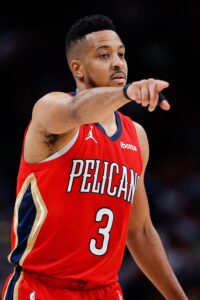After going 24-58 in 2017/18 and landing the No. 5 overall pick in the 2018 draft, the Mavericks traded up two slots to select Luka Doncic. The move paid immediate dividends, with the Slovenian winning Rookie of the Year in ’18/19 and Dallas increasing its win total by nine games (33-49).
That steady upward trajectory continued in Doncic’s second through fourth seasons, with the Mavs improving in each regular season from 2020-22. The same was true of the playoffs, with Dallas losing in the first round to the Clippers in six and then seven games, and then making it all the way to the Western Conference Finals a year ago, falling to the eventual champion Warriors.
Doncic’s offensive brilliance was on full display again in 2022/23, with the 24-year-old posting career highs in points per game (32.4), field goal percentage (49.6%) and true percentage (60.9%) while cutting down on turnovers (3.6 vs. 4.5 in ’21/22). He also averaged 8.6 rebounds, 8.0 assists and 1.4 steals in 66 games (36.2 minutes) en route to a fourth consecutive All-NBA First Team honor.
However, basketball is a team game, and Doncic played a role in the team’s significant defensive regression. While the Mavs improved on offense, going from 14th to sixth, they slid all the way down to 25th defensively after ranking seventh last season. After going 52-30 with a plus-3.5 net rating in ’21/22, the Mavs went 38-44 with a minus-0.2 net rating this season and missed the play-in tournament completely.
The Mavericks’ Offseason Plan:
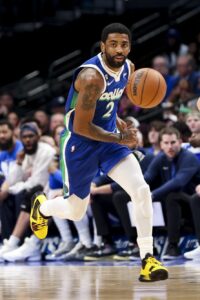 Dallas was highly criticized throughout the season for opting against re-signing Jalen Brunson, who has publicly said he would have agreed to an extension ($55.6MM over four years) in ’21/22 had the Mavs offered it prior to or early in the season. Instead, he signed with the Knicks for $104MM over four years, and it’s looking like a terrific value deal considering his excellent play during the regular season and postseason with New York.
Dallas was highly criticized throughout the season for opting against re-signing Jalen Brunson, who has publicly said he would have agreed to an extension ($55.6MM over four years) in ’21/22 had the Mavs offered it prior to or early in the season. Instead, he signed with the Knicks for $104MM over four years, and it’s looking like a terrific value deal considering his excellent play during the regular season and postseason with New York.
The only other significant roster tweak the Mavs made last summer was trading their first-round pick (26th overall) and four smallish expiring contracts for Christian Wood. The 27-year-old big man never seemed to ingratiate himself with the coaching staff though, likely due to his defensive struggles. Multiple reports have indicated (and GM Nico Harrison suggested) that the Mavs are unlikely re-sign the impending free agent.
Wood’s lack of defensive awareness is not a new problem, so I’m not sure why Dallas thought he’d suddenly get better there. Regardless, it certainly sounds like the talented scorer will be on a new team next season after averaging 16.6 points, 7.3 rebounds and 1.1 blocks on .515/.376/.772 shooting in 67 games with the Mavs (17 starts, 25.6 minutes).
Dallas’ free agent role player group features Dwight Powell, Justin Holiday, Theo Pinson, Frank Ntilikina and Markieff Morris. Powell probably has the best chance to return as the longest-tenured member of the team, but only if he’s willing to accept a substantial pay cut after earning $11MM in 2022/23 — his play has declined in recent seasons.
The biggest offseason question surrounding the Mavs relates to their trade deadline acquisition of Kyrie Irving, who is also a free agent. The move was made to kick-start their season in an effort to make the playoffs, but that’s not how things turned out — Dallas was 30-26 and clinging to the No. 5 seed prior to Irving’s first game, and went 8-18 the rest of the way.
I’m certainly not blaming that on Irving. The Mavs were 8-12 when he played, which isn’t great, but they were much, much better when he was on the court (plus-5.8) than when he was off (minus-8.3). His individual numbers (27.0 points, 5.0 rebounds, 6.0 assists, 1.3 steals on .510/.392/.947 shooting in 20 games) were stellar, and by all accounts he didn’t cause any disruptions in the locker room.
Still, the fact that Dallas was 5-11 with both Irving and Doncic in the lineup was problematic, and shows the difficulty of constructing a roster around two dominant offensive players who can be borderline liabilities at times on the other end. The fact that they traded away their best defensive player (Dorian Finney-Smith) to acquire Irving didn’t help matters.
Harrison, head coach Jason Kidd, and owner Mark Cuban have all publicly stated they want to re-sign Irving. They also said they wanted to bring back Brunson last year (Cuban talked about having his Bird rights and being able to offer more money than a rival team), so those comments offer no guarantees. Whether they should retain Irving is a different question.
True, they gave up a lot to get him, and they don’t have an easy way to replace his salary slot. Losing him for nothing isn’t an option they can seriously consider. But do they really want to give him a five-year max contract worth a projected $272MM? I’d be shocked if they actually offer that, and would consider it organizational malpractice.
Based purely on his on-court value, there’s no question that Irving is a max player…when he actually plays. The problem is, he has only appeared in 70-plus games in three of his 12 seasons, missing extended time due to injuries and various off-court issues. The unwanted attention he brings off the court can’t be overlooked, nor can his mercurial, unpredictable nature.
He reportedly requested a trade from the Nets in part because they refused to offer him a full max extension. So even if the Mavs offer a three- or four-year max deal (which would align with Doncic’s contract), would he accept it? Who knows.
Let’s say he does accept a slightly shorter-term max deal. That would start at a projected $46.9MM next season, and the Mavs already have $103.6MM committed to eight players — $108.6MM if they guarantee the rest of Reggie Bullock‘s salary, which seems likely if he isn’t traded. Even filling out the rest of the roster with minimum-salary contracts would push Dallas perilously close to the luxury tax apron in that scenario, and would remove the option of using the full mid-level and bi-annual exceptions.
The Mavs would have to make a pretty significant cost-cutting move just to regain full access to those exceptions. But doing that would mean parting with one or more of their assets, and that cupboard is already scarce after the Kristaps Porzingis and Irving trades. Further depleting that pool would lessen the odds of improving the roster, and they’re desperately trying to win as soon as possible.
They control their own 2023 lottery pick (No. 10 overall) after tanking the last few games of ’22/23, but the only other first-rounder they can unconditionally trade right now is ’27, because their other picks are encumbered (they still owe the Knicks a top-10 protected first). Rival teams would be interested in Josh Green (who’s eligible for a rookie scale extension) and Jaden Hardy, but they’re the most interesting young players on the roster outside of Doncic.
Tim Hardaway Jr. has long been rumored as a trade candidate, but his contract ($34MM through ’24/25) has neutral value at best. Dallas would definitely have to give up assets to move off the $33MM it owes Davis Bertans over the next two seasons. Ditto, to a lesser extent, for JaVale McGee ($11.7MM through ’24/25). Maxi Kleber ($11MM each of the next three seasons) probably has positive value, although he didn’t quite look right after returning from a torn hamstring, and he’s also arguably the best defender left on the roster.
The Mavs will certainly be aggressive in trying to improve their defense and rebounding, which ranked last in the league. Another losing campaign runs the risk of Doncic requesting a trade, because the disappointing season clearly did not sit well with the young star. But it won’t be easy to build a contender with their limited available assets and some of the bad contracts already on the books.
Salary Cap Situation
Guaranteed Salary
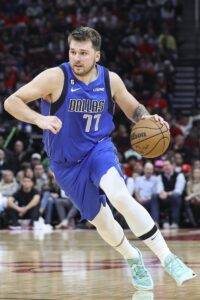 Luka Doncic ($40,064,220)
Luka Doncic ($40,064,220)- Tim Hardaway Jr. ($17,897,728)
- Davis Bertans ($17,000,000)
- Maxi Kleber ($11,000,000)
- JaVale McGee ($5,734,280)
- Reggie Bullock ($5,451,200)
- Note: Partial guarantee. Rest of salary noted below.
- Josh Green ($4,765,339)
- Jaden Hardy ($1,719,864)
- A.J. Lawson (two-way)
- Total: $103,632,631
Dead/Retained Salary
Player Options
Team Options
Non-Guaranteed Salary
- Reggie Bullock ($5,038,400)
- Note: Partial guarantee. Bullock’s salary would become fully guaranteed if he’s not waived on or before June 28.
- Total: $5,038,400
Restricted Free Agents
Two-Way Free Agents
Draft Picks
- No. 10 overall ($5,212,800)
- Total: $5,212,800
Extension-Eligible Players
Note: These are players who are either already eligible for an extension or will become eligible before the 2023/24 season begins. Irving, Powell, and Wood are only eligible until June 30.
Unrestricted Free Agents / Other Cap Holds
- Kyrie Irving ($46,900,000 cap hold): Bird rights
- Christian Wood ($21,476,189 cap hold): Bird rights
- Dwight Powell ($16,620,188 cap hold): Bird rights
- Nicolo Melli ($5,066,667 cap hold): Early Bird rights
- Justin Holiday ($1,989,698 cap hold): Non-Bird rights
- Markieff Morris ($1,989,698 cap hold): Non-Bird rights
- Frank Ntilikina ($1,989,698 cap hold): Early Bird rights
- Theo Pinson ($1,989,698 cap hold): Early Bird rights
- Moses Wright ($1,774,999 cap hold): Non-Bird rights
- Total: $99,796,835
Note: The cap holds for Melli and Wright remain on the Mavericks’ books from prior seasons because they haven’t been renounced. They can’t be used in a sign-and-trade deal.
Cap Exceptions Available
- Mid-level exception: $12,220,600
- Bi-annual exception: $4,448,000
- Trade exception: $958,529
- Note: Expires on June 26.
Note: The Mavericks would lose access to the full mid-level exception and the bi-annual exception if their team salary surpasses the tax apron.
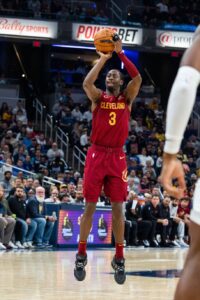 Cleveland doesn’t control its 2023 first-round pick (No. 26 overall), which will be sent to Indiana as part of the trade for LeVert. In fact, the Cavs don’t currently have any future tradable first-round picks due to the Mitchell deal, though they technically could give up swap rights in 2024.
Cleveland doesn’t control its 2023 first-round pick (No. 26 overall), which will be sent to Indiana as part of the trade for LeVert. In fact, the Cavs don’t currently have any future tradable first-round picks due to the Mitchell deal, though they technically could give up swap rights in 2024. Darius Garland
Darius Garland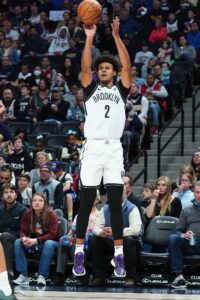 Re-signing
Re-signing 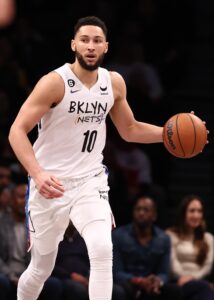
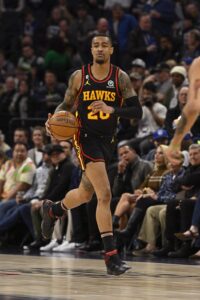 Atlanta has 10 players on guaranteed contracts entering 2023/24 for a grand total of $162.3MM. The projected luxury tax line is $162MM, and owner Tony Ressler has never paid the tax since he bought the team in 2015.
Atlanta has 10 players on guaranteed contracts entering 2023/24 for a grand total of $162.3MM. The projected luxury tax line is $162MM, and owner Tony Ressler has never paid the tax since he bought the team in 2015.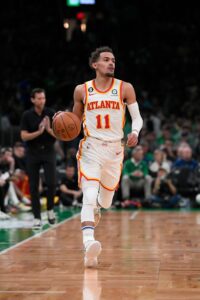
 Dallas was highly criticized throughout the season for opting against re-signing
Dallas was highly criticized throughout the season for opting against re-signing  Luka Doncic
Luka Doncic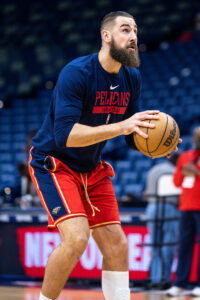 With nearly $144MM in guaranteed money committed to eight players, the Pelicans won’t have cap room this offseason. However, once they lock in low-cost team options and non-guaranteed salaries for players like
With nearly $144MM in guaranteed money committed to eight players, the Pelicans won’t have cap room this offseason. However, once they lock in low-cost team options and non-guaranteed salaries for players like 